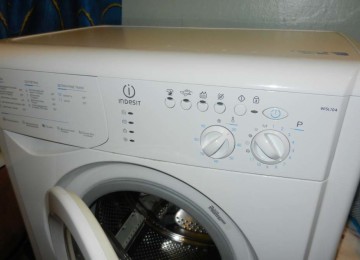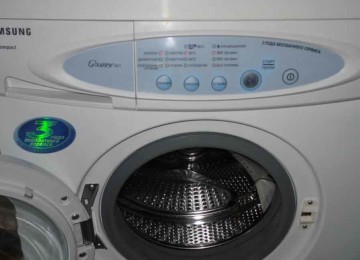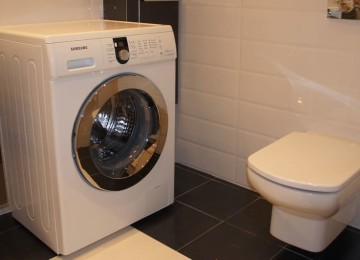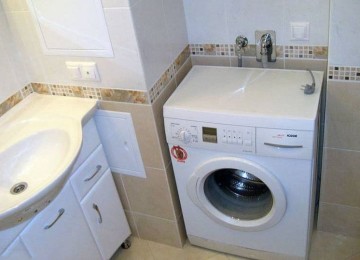A washing machine is a real household assistant that takes pride of place in almost any bathroom. The pace of life of the modern average person is constantly growing, and the machine simplifies home life. It washes and rinses clothes on its own; the owner just needs to load things into the drum and select the desired program. The occurrence of malfunctions in the operation of the unit entails many problems; housewives are especially upset by the unpleasant odor emanating from the device. Many people cite the long service life of the device, although in reality the culprit is improper care.
Timely prevention and proper cleaning of equipment elements can extend the service life and improve the quality of washing. How and with what to clean a washing machine, how to do it correctly, what are the basic rules for caring for the device?
Why clean your washing machine?
The quality of washing largely depends on the technical condition of the washing machine. When using a new machine, usually no problems arise. Well, after a certain period of time you may notice problems in the operation of the unit. This happens due to the fact that the following deposits settle on the elements of the “home assistant”:
- residues of household chemicals (remain in the compartment after almost every use);
- scale (usually covers the surface of the electric heater);
- fungus or mold;
- dirt and small objects (clog the drain pump filter);
- rust, sand (settle in the inlet hose filter).
The fact that the quality of washing has deteriorated significantly is evidenced by white items that, after being removed from the drum, acquire a grayish tint. The smell of washed items also indicates the presence of blockages - they do not smell clean and fresh.
Dirt on the walls and door can be easily removed with water and a clean cloth, but you will have to tinker with internal blockages. To do this, we arm ourselves with special tools and the necessary information. It is recommended to carry out the cleaning procedure to remove dirt and scale once a quarter. However, if there are pets in the house, then you need to resort to it more often.
Causes of unpleasant odor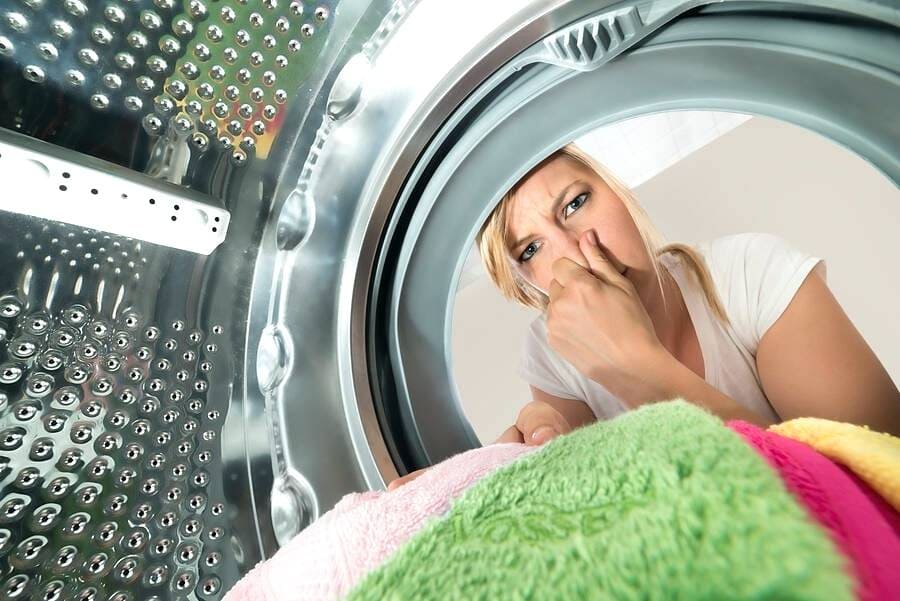
Housewives often encounter the problem of an unpleasant odor emanating from their washing machine. At first, the laundry smells damp; in more advanced cases, the machine emits an unpleasant sewer smell. This situation occurs for the following reasons:
- The hatch is always closed. It takes several hours for the working capacity of the machine to completely dry after washing. If the hatch is immediately closed after the end of the cycle, the moisture will not evaporate, but will remain in the drum.As you know, heat and high humidity create a favorable environment for the growth of harmful bacteria and mold, which are the cause of the formation of a not entirely pleasant aroma.
- Storing dirty items in a drum. The washing machine is not a place for collecting things to be washed. For this purpose, special laundry baskets are used that have special holes for ventilation. If you block the access of air to things, then the stagnant air will penetrate into all the internal cavities of the unit and, undoubtedly, will be fixed inside for a long time.
- Blockages in the drain hose. If the machine has been in use for a long time and no maintenance has been carried out, then the source of the unpleasant odor may be contamination in the drain hose. It is in it that debris, salts, lint and soap scum accumulate, which must be removed in a timely manner.
- Chemical residues in the loading tray. A dirty powder and conditioner compartment can also cause odors. After all, the presence of dried powder in the tray will lead to poor passage of the channel responsible for supplying the detergent. And this, in turn, will cause the formation of mold and bad-smelling washed clothes.
- A layer of scale deposited on the heating element. Typically, this type of plaque produces a rotten smell. The situation is undesirable, as it can lead to permanent breakdown of the washing unit.
- Use of chemicals in large quantities. Some housewives prefer to use more powder and conditioner than the instructions require. However, such abuse does not at all improve the quality of washing, but, on the contrary, worsens it.The fact is that excess powder that has not dissolved as a result of washing usually settles on the walls of the machine. After a while they start to smell. The same effect will result from the use of poor quality powders, the particles of which are poorly soluble in water.
- Incorrect installation of household appliances. If the machine is installed at an angle, the water will not drain completely and will stagnate in some parts of the device. That is why due attention should be paid to the correct installation of equipment.
How does scale appear in a washing machine and why is it dangerous?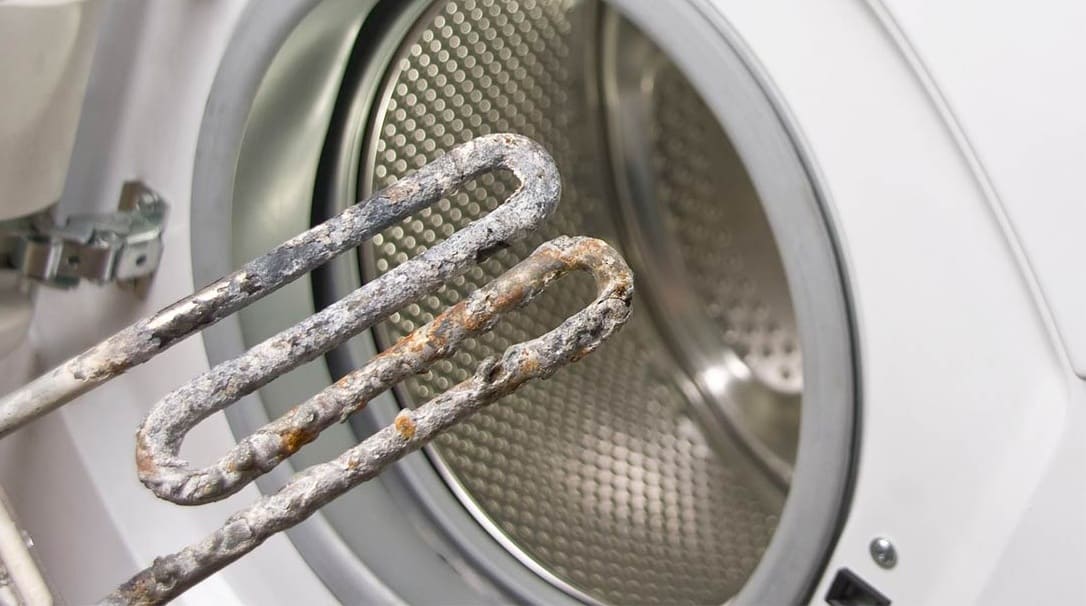
Experts who repair washing machines claim that the most common cause of machine breakdown is the presence of an impressive layer of scale on the heating element. The reason for the formation of a white coating is poor water quality and washing at a temperature of 30-40 degrees. Flint, pet hair, threads and powder particles very quickly stick to the lightly scaled surface of the heating element. After some time, the element stops working properly and fails completely.
Products connected to a water supply system with hard water are especially susceptible to breakdowns. Also at risk are units used by pet lovers. In these cases, cleaning should be carried out regularly, and water softening agents should be added at each wash cycle. Proper care of household appliances allows you to avoid more serious technical problems.
Cleaning the washing machine using folk remedies
To ensure proper care of your machine, it is not necessary to buy expensive household chemicals. To do this, you can use the funds available in every household.They are commercially available and can be purchased at a low cost. However, care using folk remedies will require more time from the owner. Let's consider which substances are most effective in the fight against white plaque.
Lemon acid
Helps neutralize the smell of dampness and remove the limescale layer on elements. Softens water and removes dirt. Acid does an excellent job of removing dirt deposited on the walls of the drum. The substance is used as follows:
- Pour four tablespoons of acid into the powder tray.
- We set the program with a temperature of 60 degrees.
- We make sure that there are no things in the drum.
- We start the cycle and wait for the end.
- After this, wipe the surface dry from the inside. We pay special attention to the rubber cuff, that is, the rubber seal. There should be no traces of moisture left on it.
Baking soda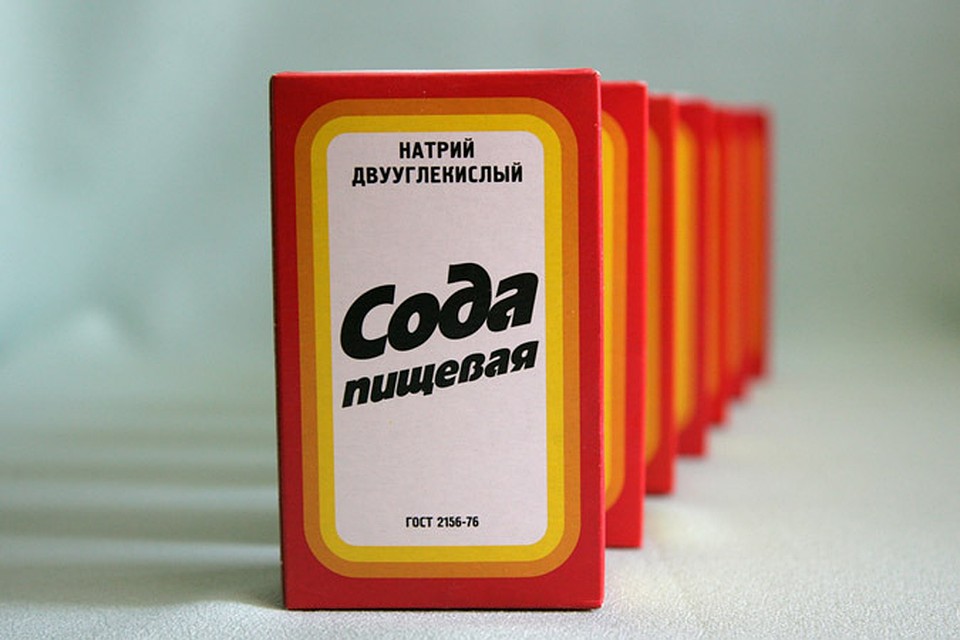
Using baking soda has a beneficial effect on the condition of the washing mashine. The substance is absolutely safe to use and allows you to achieve the following results:
- Soften hard water. Soft water promotes good operation of the entire unit and the heating element in particular.
- Disinfect the surface. Baking soda has an antibacterial effect, so bacteria, mold and other pathogenic microorganisms will not grow on the walls.
- Whiten yellowed plastic surfaces. This is especially true for light-colored washing machines.
- Eliminate unpleasant odor. Baking soda does a great job of removing foreign odors.
You can use the product in one of the following ways:
- Wiping with a mixture of baking soda and water. To do this, prepare a solution consisting of one liter of warm water and 100 grams of soda.The resulting product is used to wipe the tray, the surface of the machine, hoses and filters.
- Adding soda to the washing powder compartment. Place about 100 grams of soda in the tray, set the temperature to 80 degrees and start the idle wash mode.
Soda will return the device to a well-groomed appearance and keep it clean, but the procedure should be repeated regularly. It should be noted that soda copes with minor stains, so in advanced cases it will not solve the problem.
Copper sulfate
This substance is in the form of a crystallized blue powder. Used to remove stubborn dirt, mold, grease, and perfectly disinfects the surface. You can use it as follows:
- We dilute the powder with water in the proportion of 30 grams of vitriol per 1 liter of water. Mix thoroughly until all the crystals dissolve.
- We apply the solution to all elements of the machine, including hoses and filters. Leave for 24 hours for it to be absorbed.
- We select the high temperature mode and run the cycle without loading laundry.
- At the end of the cycle, thoroughly wipe the surface and ventilate the device.
The solution can be used as a prophylaxis; in this case, the concentration of the substance is halved.
Vinegar solution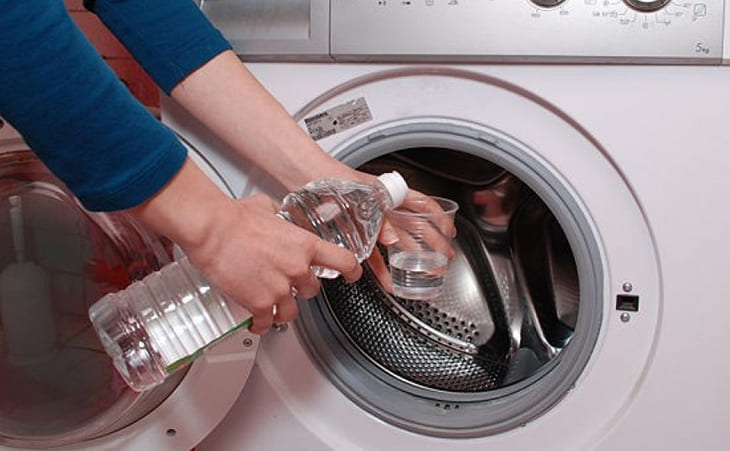
Vinegar disinfects surfaces, perfectly removes limescale and ingrained odors, and has a whitening effect. It is undoubtedly in the arsenal of every housewife, and besides, it is not at all expensive. There are several effective cleaning methods:
- Using a clean cloth soaked in liquid. Suitable when the device has been used for a short time and there are no stubborn stains on it. All elements of the device are treated with fabric.At the end of the procedure, ensure good ventilation: there is no need to close the chemical compartment and the hatch for several hours.
- Internal cleaning in idle wash mode. 9% vinegar is poured into the drum; things should not be in it. High temperature is preferred when performing this procedure.
- Cleaning with baking soda and vinegar. The first component is poured into the tray, and the second - directly into the drum. The cycle is carried out at high temperature. It is advisable to prefer a short-term regimen.
At the end of these manipulations, the internal and external surfaces of the unit are wiped dry. Additional rinsing modes will help get rid of the specific smell of vinegar; you can add a little delicious-smelling conditioner.
Some housewives add apple cider vinegar in a small amount, about 1-2 tablespoons with each wash. It acts as a water softener and gives the laundry a delicate, pleasant aroma.
White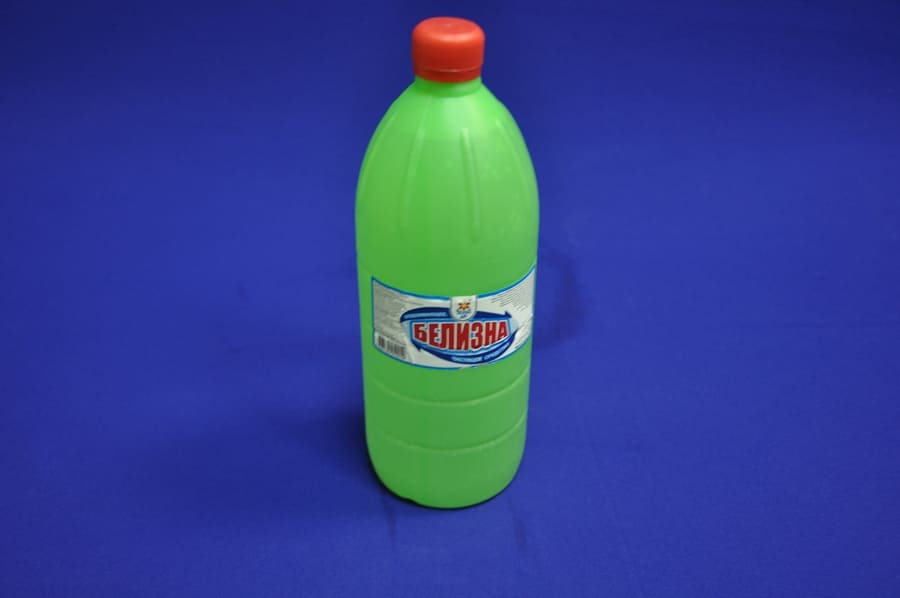
Chlorine, often called bleach, is an excellent mold control agent. The substance is very aggressive, so it is better to use it in exceptional cases. To remove black plaque proceed as follows:
- Treat stains with a sponge soaked in the substance. You must first ensure a flow of clean air, since inhaling large quantities of chlorine vapor can harm your health. When carrying out these manipulations, be sure to use rubber gloves and a protective mask. If possible, we treat contaminated areas quickly.
- We carry out a dry wash cycle. Before this, pour 500 grams of chlorine-containing substance into the powder compartment, select the high-temperature mode - 90-95 degrees.After half an hour, stop the operation of the device and leave it for 2 hours. Next, set the rinse and drain mode and wait for the end of the cycle. To neutralize the smell of chlorine, you can use a vinegar solution to wipe the walls of the drum.
Housewives know another product with a whitening effect. This is hydrogen peroxide. Unlike the previous substance, it is absolutely safe and can also be used to give the washing machine a well-groomed appearance. The composition is sold in any pharmacy; 3% peroxide is suitable for cleaning scale, mold and other contaminants. The procedure consists of the following steps:
- Pour the liquid into a spray bottle. Spray it liberally inside the drum and onto contaminated areas.
- Close the hatch and leave for 10 minutes.
- After this time, we re-treat the surfaces with soda.
- We turn on the washing cycle without loading laundry at a temperature of 90 degrees.
- If necessary, select a second rinse.
Hydrogen peroxide is available in tablets, which are also effective. For one procedure you will need 10 tablets, we send them to the compartment. Add 200 grams of baking soda there. We choose a high-temperature mode that lasts at least 2 hours. After completing the procedure, thoroughly wipe and ventilate the unit.
How to clean the drain filter?
Signs of a dirty drain filter are unpleasant odors and stagnant water that does not drain well. The filter is a place where hair, soap scum, dirt, sand particles and small objects accumulate that were not removed from the pockets before washing. They impair the permeability of the hose through which waste water is drained.This element needs to be cleaned at least once every 3 months, and if the machine is used intensively, then more often. You can do it like this:
- Remove the protective panel. It is usually located in the lower corner of the device and can be round or rectangular. This is very simple to do; to do this, you need to pry the plate in a certain place using a flat-head screwdriver.
- We prepare a container for draining water of suitable size or a dry rag, which we spread on the floor. Please note that in some cases, about half a liter of water may leak out.
- Carefully remove the filter by turning it counterclockwise. We clear it of debris and rinse it under running water.
To rinse the hose, you need to detach it from the entrance to the sewer pipe or siphon, after draining the water through the filter. This can only be done after carefully familiarizing yourself with the design of the machine. On some models, the connection point is at the bottom, so you will need to tilt the washing mashine on its side. Next, the protective panel and filter are removed, and the clamp is loosened using pliers. Only then can you remove the hose and wash it. If you have any doubts, it is better to call a specialist who will quickly perform all the steps.
Cleaning the tap water filter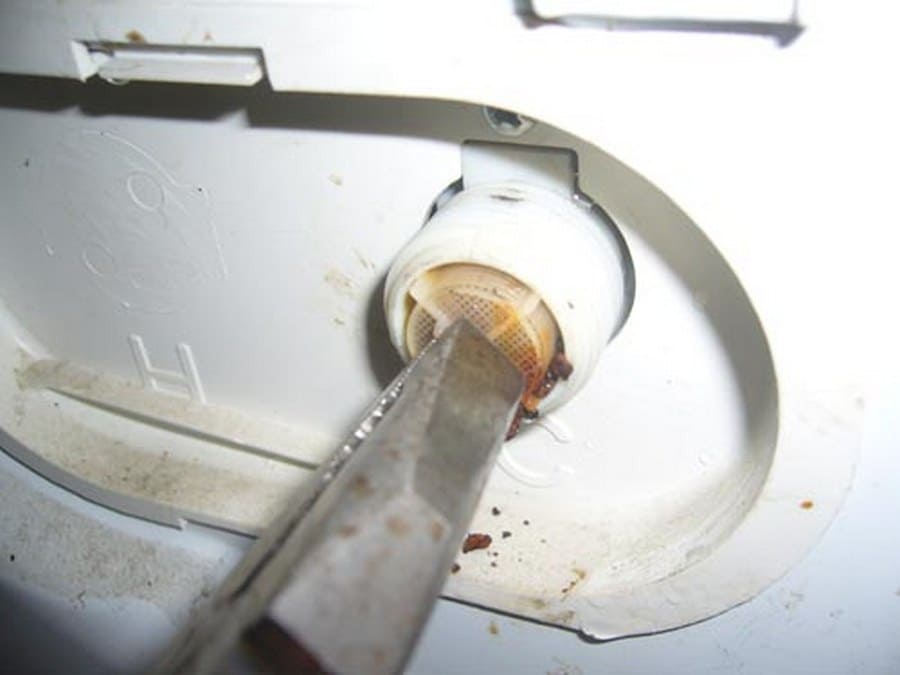
In addition to the drain filter, the machine has another filter that is connected to the inlet hose. Over time, it accumulates particles of sand, rust and other organic matter contained in the water. Water does not enter the machine and the wash cannot be started. The program reports this malfunction using special alerts that appear on the display. To ensure that the machine can always draw the right amount of water, you should clean this filter in a timely manner.Experts advise doing this at least once every six months. However, if the quality of the water leaves much to be desired, it is advisable to carry out the procedure more often. Cleaning the device yourself is not that difficult. To do this, perform the following sequence of actions:
- Shut off the cold water supply to the washing machine. To do this, turn the corresponding key. We make sure that everything is done correctly!
- We free access to the rear of the washing mashine, you can turn it around. The inlet hose is usually located in the upper right corner.
- Carefully unscrew the nut by turning it counterclockwise. There is a filter inside the hole. We take it out using pliers.
- We clean the mesh in water; you can use an old toothbrush for this.
- We insert it back and screw it tightly, turning it clockwise.
- We open access to tap water.
By performing preventive maintenance on the filter located on the back of the case, you can at the same time wipe the surface, clean it of dirt and mold, if any. After this, we install the device in its usual place, ensuring its level position without tilting.
How to clean the detergent container in a washing machine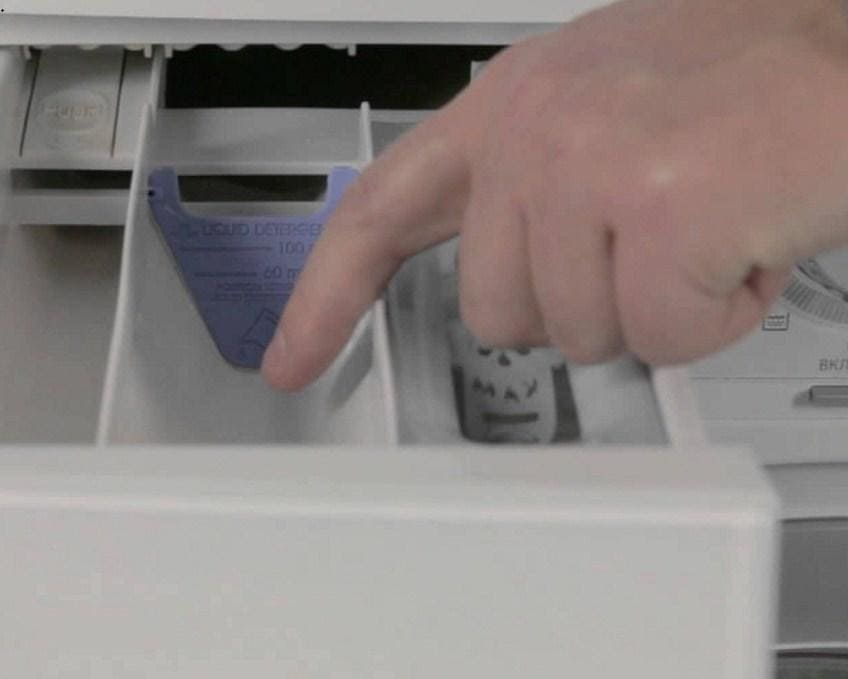
The process of cleaning the container is not difficult, but it requires meticulousness and patience from the owner. First you need to carefully remove the compartment without damaging the latches. In most models, it is held in place by side fastenings, so when pulling the container towards you, you need to lift it slightly. Some models are equipped with a special button, by pressing which you can easily pull out the container.
If a lot of dirt has not accumulated on the plastic surface, it is washed in running water.Dried traces of powder are removed with a toothbrush. We pay attention to all grooves and recesses. We also clean the place where the compartment is inserted. Limescale and dried powder usually accumulate there too.
Well, if the cuvette requires more thorough cleaning, proceed as follows:
- We rinse the container under running water using soda and a chlorine-containing substance. Whitewash won't hurt as there are no rubber parts so you can use it.
- Prepare a bowl of hot water and add one packet of citric acid into it.
- Place the powder container in water and leave for one hour. If heavily soiled, you can leave it for a longer time.
- After this, we remove the remaining deposits using a sponge and an old toothbrush.
- We wipe the surface, dry it and put the cuvette in place.
There is another effective cleaning method. Sprinkle the removed container generously with baking soda and fill it with vinegar. This mixture will remove limescale and rust, and the product will acquire a well-groomed appearance. For stubborn, difficult-to-remove stains, the tray can be treated with a chemical spray. Spray it over the entire surface, including hard-to-reach places, and leave for several hours. After such a preparatory procedure, all contaminants are removed much easier.
Cleaning the washing machine using chemicals
In addition to traditional folk methods, you can clean the device from lime deposits, dirt and rust using chemicals available for sale in every specialized store. They are designed taking into account the design features of the machine, do not harm its internal elements, and are safe for fabrics and humans.The most effective, according to most users, are the following:
- Antikalk from Israeli manufacturer Sano. Gel for removing limescale with an antibacterial effect.
- Doctor TEN. A product from a Russian manufacturer in the form of a powder that removes scale from heating elements. An effective and inexpensive product that can be used for both washing machines and dishwashers.
- Antiscale. An analogue of the previous product, the compositions of the powders are identical. Produced by a Belarusian manufacturer.
- MagicPower. It is considered one of the best chemicals for removing plaque from the heating element and internal surfaces of the machine. Produced by a German company.
- Topperr An effective product from a German manufacturer for removing scale of varying degrees.
- Filtero copes well with old scale, an effective German product for cleaning washing mashines. It features a convenient release form - the package is designed for one use.
- Beckmann. A universal product, also produced in Germany, which not only removes limescale, but also neutralizes odors caused by various contaminants in the washing mashine.
- Kaneyo. A Japanese chlorine-containing product that gets rid of plaque and unpleasant odors and disinfects the surface.
- LuxusProfessional. A universal liquid with a pleasant lemon scent that should be in every household.
- Bork. Powder produced by a Korean manufacturer. Before use, it is dissolved in water in the specified proportion.
It should be noted that many advertised products, for example, Calgon, cannot cope with accumulated contaminants. They are intended for preventive purposes and are added to the compartment with each wash cycle.
How to clean a top-loading washing machine
Machines into which laundry is loaded not from the front, but from the top, have some design features. For example, they have access to the drain hose filter from the side. They also have more hard-to-reach places, which makes maintenance much more difficult. The elements of the unit are cleaned in stages. High temperature conditions are required. We proceed as follows:
- Pour 2-3 glasses of vinegar into the compartment. Let's launch the program.
- After a few minutes, add half a glass of baking soda.
- At this stage, the components react, so we turn off the machine to extend the duration of the chemical process.
- At the same time, you can start cleaning the external surfaces of the machine and container.
- After an hour we turn on the machine. After finishing the washing cycle, open the hatch and make sure that there are no traces of dirt and scale inside. If necessary, wipe the drum walls with a damp cloth.
- Dry the drum, leaving the hatch in the open position.
Rules for caring for washing equipment
The following basic rules of care will help extend the performance of equipment and save resources:
- We do not load the drum completely, but about 2/3. There is no need to stuff things tightly, as they will not be washed properly, and the structure will be subject to excessive load.
- When sending things for washing, we check the pockets for small objects and coins that could cause contamination of the hose.
- We place things with rhinestones or fleecy clothes in a special laundry bag. In this case, small particles will settle on the fabric and not on the elements of the household device.
- We constantly use anti-scale products.We only use those designed for washing machines.
- We control the volume of powder used, do not add more than necessary.
- After finishing washing, rinse the tray and wipe the inside of the drum with a dry soft cloth, paying special attention to the rubber seal.
- Filters should be cleaned periodically to remove accumulated debris.
- Sometimes we use a single wash at high temperature to remove settled particles.
- We immediately remove the washed items from the machine. Leave the hatch and cuvette open for a couple of hours.
- We store dirty things not in the machine, but in a specially designed basket.
Any equipment needs to be valued and looked after, then it will last for many years, doing the job efficiently, efficiently, and without unnecessary losses.






